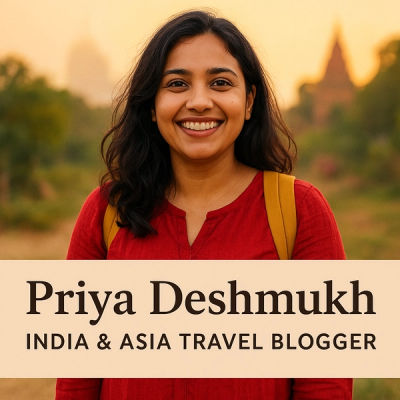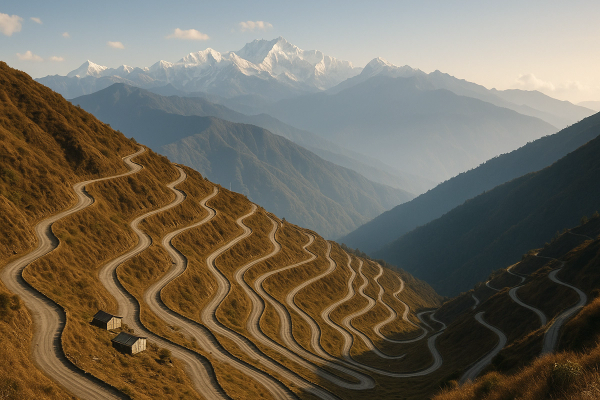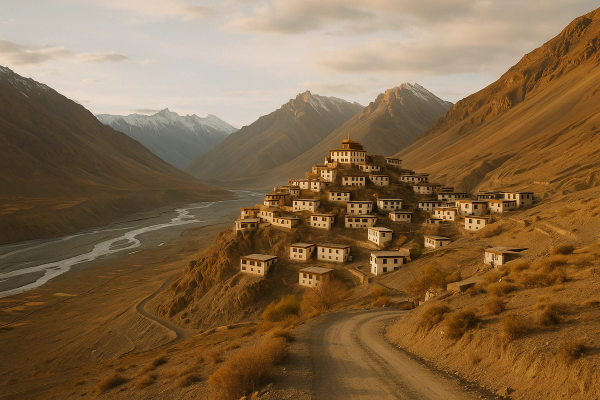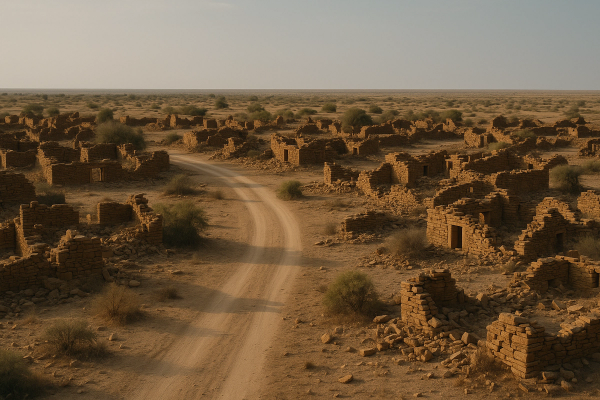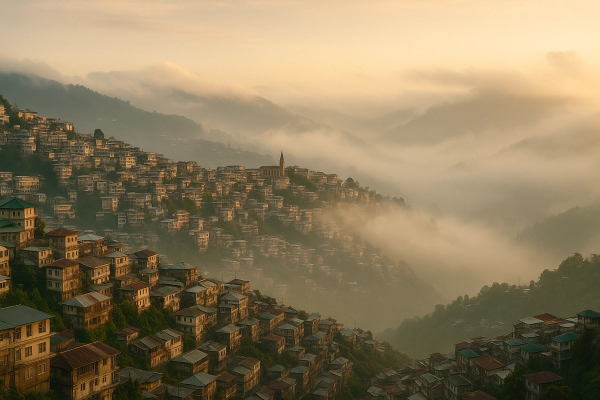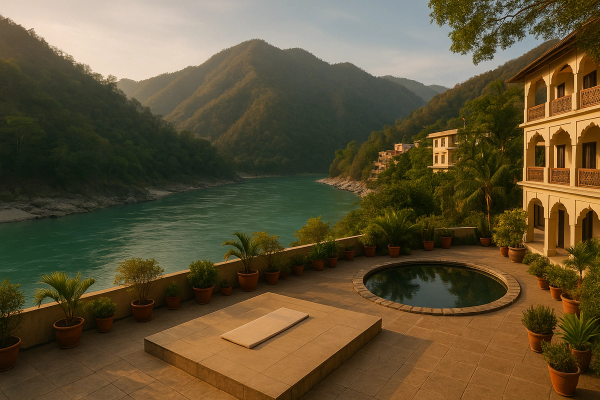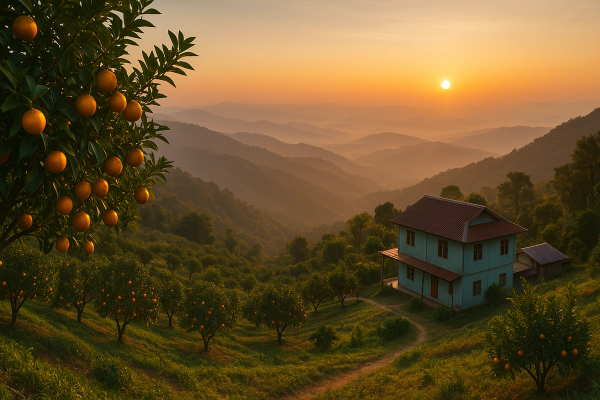Couples Therapy Retreats India: Heal Your Relationship While Traveling — What Actually Happened When We Went#
I’m gonna be honest, we didn’t book India because we were perfectly fine and dandy. We were exhausted, looping the same fights, me getting snappy over tiny stuff like who didn’t refill the water filter and him getting quiet… like too quiet. We joked about “going somewhere beautiful to fix it,” then, uh, we actually did. India. A couples therapy retreat. Sunshine and hard conversations and chai. Not exactly the Instagram version but way more real.¶
Why India, and why a therapy retreat while traveling?#
We’d both wanted India forever. You know how some places kind of haunt your Pinterest boards for years and you keep saying “one day”? The colors, the temples, the yoga, the food, that rough-around-the-edges honesty that India has. And lately, like 2024 into 2025, my feed started exploding with “healing holidays” and couples travel that’s not just spa-days but actual therapeutic work. People doing Gottman-style workshops in Goa, Ayurveda programs with counseling in Kerala, silent meditation plus guided check-ins near Rishikesh. It’s a whole mood. Travel meets repair. The term “relationship sabbatical” was getting tossed around, which sounded dramatic but… also kinda right. So we saved, we booked, we promised we’d show up and not ghost our feelings. And we went.¶
Where we went (and why we chose these places)#
We split it into three feels: Goa for sun, structure-ish therapy, and the sea; Rishikesh for yoga and river calm and that feeling of “we’re tiny but okay”; Kerala for Ayurveda and the kind of slowness you only find when it rains at night and the palm trees are arguing with the breeze. This triangle just worked for us. It felt like a progression: unwind, look at our stuff, soothe. We didn’t try to cram in everything — no golden triangle sprint, no 10-cities-in-10-days nonsense. Slower, kinder.¶
Goa first: we arrived into Dabolim late afternoon, that honey light bouncing off the palms. The retreat we picked was small — eight couples max — run by two therapists from Mumbai who, you could tell, were trained in serious frameworks but spoke like real humans. Mornings were group workshops (think communication drills that aren’t corny), afternoons beach and downtime, evenings optional check-ins. We stayed near Ashwem where the vibe is more chilled than Baga or Calangute. Sand so soft my brain finally got the memo to unclench.¶
Then Rishikesh. We flew Mumbai to Dehradun (Jolly Grant airport is cute and kinda tiny), grabbed a cab down to the Ganges. Rishikesh was cooler and greener than I pictured, less glossy than Instagram but more alive. Our days were a mix of sunrise yoga, river walks, and these surprisingly tender conversations under huge bodhi trees. I remember we got into a dumb fight over who didn’t bring the water bottle. Me and him went quiet for twenty minutes. Then we did the listening exercise we’d been taught in Goa — one person speaks for 3 minutes, the other just mirrors back, no fixing — and something shifted. Not big fireworks, just… softness. Little bit of grace.¶
Kerala last: near Kovalam for a few days, then inland toward the backwaters. We did a 4-day Ayurveda program which, heads up, is not just massages. It’s herbal oils, ooomph diet changes, and literal doctor consults who ask you about sleep, digestion, mood, stress. Part of our plan included one counseling session where the therapist connected the dots between our nervous systems and our dumb recurring tiffs. Kerala felt medicinal in a way Goa is languid and Rishikesh is spiritual. But also the food. My god the curries. And the rain at night sounded like somebody unrolling velvet across the roof.¶
The therapy part — what actually happens (and did it help?)#
I was terrified our “couples retreat” would turn into a group overshare circus. It didn’t. There’s structure. We did a few classic things: the “state of the union” check-in where you name what’s going well and what’s hard; the “soft start-up” practice for bringing up issues without doom; basic attachment styles stuff; and this one exercise where you map fights backwards and find the trigger behind the trigger. Like, it wasn’t about the freaking water filter. It was about feeling unseen. One afternoon, our therapist had us spend 20 minutes apart journaling a memory we never told the other person, then read it out loud on the beach at dusk. I cried. He cried. We both cried. And then we ate pani puri and laughed because our faces were puffy and ridiculous.¶
It’s not miracle magic. We didn’t become perfect communicators. But something inside got less defensive. We practiced tiny bids for connection — hey, look at that crazy sunset, or can you hold my hand for no reason — and in India, where everything is loud and colorful and heartbreaking and holy, those little bids felt like, you know, portals. Our fights aren’t gone. But the edges aren’t so sharp.¶
Visas, money, phones — 2025 stuff you actually need to know before you go#
Okay, boring-but-critical. Most travelers in 2025 still use India’s e-Visa system for tourism. Apply online (official site only!), and don’t leave it last-minute. Processing can be fast — a few days — but you don’t wanna risk it if your trip is tight. You’ll choose durations like 30-day, 1-year, or 5-year multiple entry depending on your nationality and plan. Fees vary by country and visa type, not one flat number. Print the visa and carry a digital copy too. Also some regions in the Northeast and borders need a special permit (Protected Area/Restricted Area Permit), not relevant for Goa/Rishikesh/Kerala, but heads-up if you’re dreaming about Arunachal or certain parts of Sikkim or the Andamans. COVID testing requirements were dropped ages ago and in 2025 there’s no routine testing needed for entry, but if you’ve been in a yellow fever country recently, that certificate is still a thing. One more admin bit: hotels will ask for your passport to complete a digital “Form C” registration — normal. Don’t freak.¶
Money-wise, India is wild with digital payments now. UPI is everywhere — little chai stalls, tuk-tuks, fancy resorts. As of 2025, a bunch of banks and fintechs let foreign visitors set up a tourist UPI wallet at major airports or partner counters, so you can tap/scan even without an Indian bank account. It’s rolling out city by city, so check current info before you land, and have a backup card plus cash. ATMs are fine but some spit out only 2,000 INR notes, which is annoying. Also, get a local eSIM or SIM at the airport; the eKYC process with your passport is smoother than it used to be. WhatsApp will be your lifeline for taxis and retreat coordinators. Bring a multi-plug adapter. And, sorry, but carry small change — tips, temples, tea. It matters.¶
Safety, seasons, and health in 2025 (not to scare you, just real talk)#
India is not one place. It’s many. So safety shifts with location and season. Goa felt easy and relaxed, but watch beaches for rip currents and don’t leave phones on the sand when you both run into the water because yeah, opportunity is a thing. Rishikesh was safe-vibe, though rafting depends on river levels and the season — check licensed operators and gear. Kerala during monsoon is dreamy but roads flood with surprise, so travel time is a joke sometimes. Big trend in 2025: heatwaves and air quality warnings, especially pre-monsoon in northern India and around Delhi. If your trip includes a Delhi stopover, pack an N95 and plan indoor days if the AQI spikes. Hydrate like it’s your job. Dengue pops up during monsoon season; mosquito repellent is not optional. Tap water’s not potable for most visitors — use hotel filter water or bottled. And yeah, couples who fight big sometimes feel raw in new places; set a code word that means “we pause and breathe” before you blast each other in public. Learned that the hard way in a market in Arambol where we were both hangry and silly.¶
Where we stayed and how much it actually cost us#
Prices in 2025 are… all over the place, but here’s our reality. In Goa near Ashwem/ Mandrem, boutique stays with breakfast were around 7,000–14,000 INR per night in shoulder season, more in peak December/January. Our therapy retreat fee included workshops, some meals, and a 1:1 session — think 80,000–140,000 INR per couple for a week depending on what’s included and how fancy the lodging is. Rishikesh had range: river-view hotels cost 5,000–10,000 INR per night; yoga ashrams were donation-based or around 1,500–3,000 INR per person per day for simple rooms and meals. Luxury wellness? Ananda in the Himalayas was quoting higher — it’s a splurge — packages can hit 45,000–90,000 INR per night with programs. Six Senses Vana in Dehradun leans premium, full-board wellness with daily therapies — expect closer to 70,000–100,000+ INR per night in program season. Kerala had the sweet middle: Ayurveda resorts like Somatheeram or Kairali have packages starting roughly 12,000–35,000 INR per night depending on how intense your treatment plan is. Homestays are still gems at 3,000–6,000 INR. We mixed it: one splurge week, two normal weeks. My spreadsheet cried a little but our relationship didn’t, so… worth it.¶
Food adventures (and a couple tiny fights we laughed about later)#
Food was therapy in disguise. In Goa, we did a fish thali that felt like a negotiaton — who gets the last piece, who eats faster — and then we shared, and we slowed. Rishikesh is mostly vegetarian, which was perfect for mornings after heavy talks. Masala chai saves lives, I swear. In Kerala we had a sadya, a traditional feast on banana leaf, and I tasted a pickle that made me rethink every condiment I’ve ever liked. Breakfasts were dreamy: appam with stew, idiyappam, coconut chutney. One night we were both grumpy and ended up at a tiny café in Tapovan where a kid was doing homework at the next table. We ordered rajma chawal and quietly agreed to stop weaponizing the word “always.” Food is tied to memory, always always, and now cardamom smells like relief to me.¶
Getting around and booking tips that actually saved us (and yes, micro-arguments happened)#
We flew into Goa, did a domestic to Dehradun, then trained back to Delhi on a Vande Bharat because I wanted to see the windows fly by. Vande Bharat trains are shiny and comfy for India standards, but book IRCTC early if you want seats together. In Goa, Uber/Ola aren’t as reliable; use GoaMiles or pre-paid taxis. Or rent a scooter if you’re confident — we didn’t because traffic chaos plus my fear of potholes. In Rishikesh, walking is a thing, just watch the monkeys. Kerala, we did a driver for a couple days because timing is fake during monsoon. A few booking tips that slapped: check for festival dates before you lock in (Goa prices jump like crazy around New Year), add buffer days in Rishikesh if yoga/rafting timings change, and don’t over-plan Kerala — the weather decides. Travel insurance is not optional in 2025, especially if you’re doing adventure stuff.¶
- Book trains and flights before retreats. Therapy dates are fixed but travel can be messy, so lock the hard parts first.
- Use hotel WhatsApp for directions. Google Maps isn’t perfect in small lanes; local pins save you arguments.
- Have offline backups. E-visa PDF, passport scans, retreat schedule. Phone batteries die exactly when you’re lost.
Would we go back? What we’d do differently next time#
Short answer: yeah. Long answer: we learned we can’t go full speed and full feelings at once. Next time we’ll do fewer transitions — maybe just Goa and a hill town. I’d spend a day with no agenda after every heavy therapy day. Also, we’d add one purely silly thing, like cooking class or handpan workshop or whatever, just to remember play. We’d bring fewer clothes and more patience. And we’d pick a retreat with a follow-up plan — some offer Zoom check-ins a month later, which matters when normal life comes roaring back and your old patterns knock on the door. India didn’t fix us. But India gave us a place to practice being kinder, in rooms where incense and honesty both matter. The travel and the therapy fed each other, and we came home less brittle, more us.¶
Random stuff I wish somebody told me before we went#
UM. Pack way less than you think, and bring a power bank, mosquito repellent that doesn’t smell like regret, and a tote bag for temples where you leave shoes at the door. Goa beach hawkers are friendly but persistent — a firm no works. Rishikesh bridge crowds get intense; cross early morning if you hate chaos. Kerala’s monsoon is romance plus delays, so build patience into your calendar. Ayurvedic detox can make you emotional — it’s normal. Also don’t compare your relationship to the other couples at the retreat. We did that once and just felt bad. You’re not them. You’re you. And lastly: carry snacks. Some fights are just low blood sugar with fancy costumes.¶
If you’re thinking about it… just go, but go gently#
Therapy while traveling is weird and beautiful. India is humbling and huge and not always easy, which, honestly, matched our relationship like a mirror. We came for chai and breakthroughs and got both, but in uneven doses. And that’s fine. Build your route around energy, not just sights. Let the Ganges slow you, let Kerala feed you, let Goa remind you to laugh at the foam on your feet. Check your visa early, watch the season, pay attention to health advisories in 2025, and bring your curiosity more than your certainty. If you want more stories like this or just need ideas to plan your own slightly chaotic, hopefully healing adventure, I keep finding good bits on AllBlogs.in. Go see. Then go see India. And maybe a softer version of each other, too.¶


